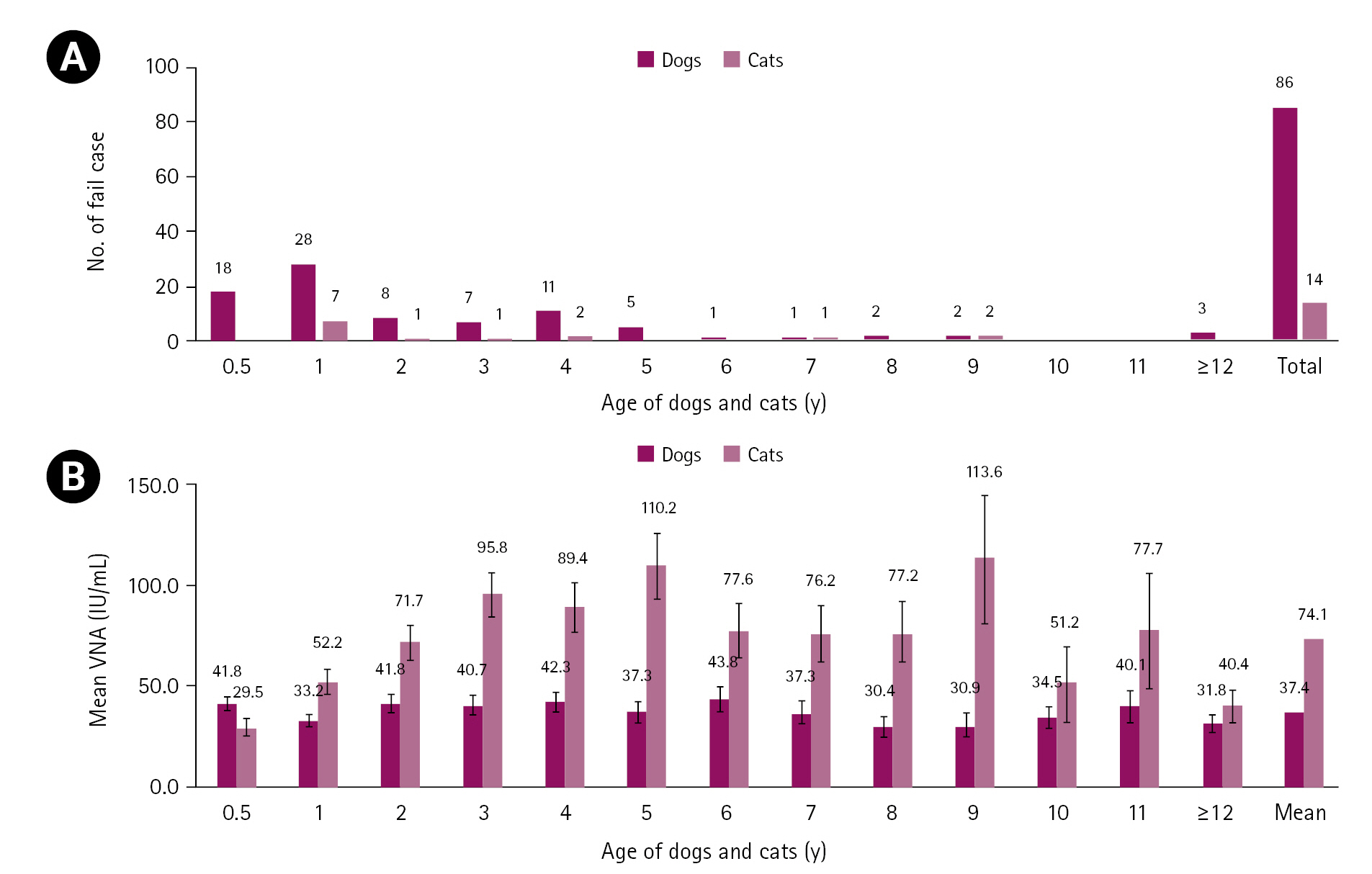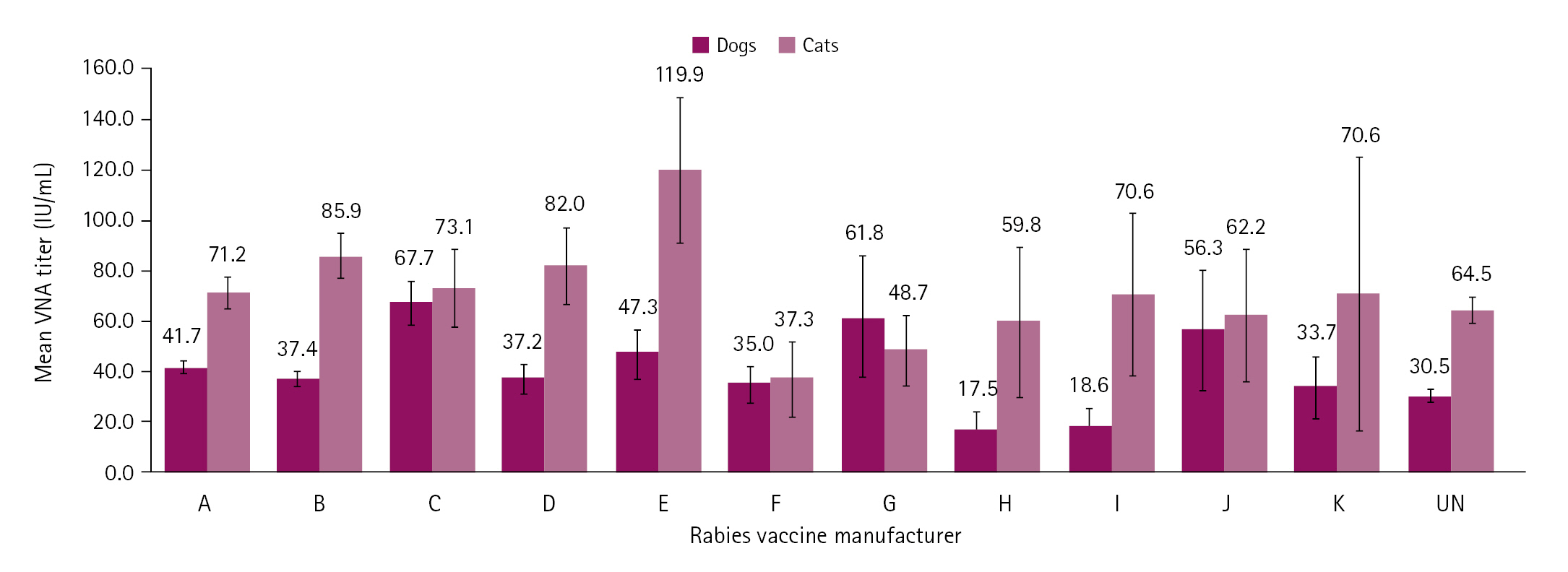1. Banyard AC, McElhinney LM, Johnson N, Fooks AR. Introduction History of rabies control by vaccination. Rev Sci Tech 2018;37:305-322.


2. Bourhy H, Kissi B, Tordo N. Taxonomy and evolutionary studies on lyssaviruses with special reference to Africa. Onderstepoort J Vet Res 1993;60:277-282.

3. Gilbert AT. Rabies virus vectors and reservoir species. Rev Sci Tech 2018;37:371-384.


4. Fooks AR, Cliquet F, Finke S, Freuling C, Hemachudha T, Mani RS, Müller T, Nadin-Davis S, Picard-Meyer E, Wilde H, Banyard AC. Rabies. Nat Rev Dis Primers 2017;3:17091.



7. Hostnik P. The modification of fluorescent antibody virus neutralization (FAVN) test for the detection of antibodies to rabies virus. J Vet Med B Infect Dis Vet Public Health 2000;47:423-427.


8. Cliquet F, Aubert M, Sagné L. Development of a fluorescent antibody virus neutralisation test (FAVN test) for the quantitation of rabies-neutralising antibody. J Immunol Methods 1998;212:79-87.


9. Raybern C, Zaldivar A, Tubach S, Ahmed FS, Moore S, Kintner C, Wallace RM, Mandra AM, Stauffer K, Condori RE, Garrison I. Rabies in a dog imported from Egypt: Kansas, 2019. MMWR Morb Mortal Wkly Rep 2020;69:1374-1377.



11. Shiraishi R, Nishimura M, Nakashima R, Enta C, Hirayama N. Neutralizing antibody response in dogs and cats inoculated with commercial inactivated rabies vaccines. J Vet Med Sci 2014;76:605-609.


12. Suzuki K, González ET, Ascarrunz G, Loza A, Pérez M, Ruiz G, Rojas L, Mancilla K, Pereira JA, Guzman JA, Pecoraro MR. Antibody response to an anti-rabies vaccine in a dog population under field conditions in Bolivia. Zoonoses Public Health 2008;55:414-420.


13. Cliquet F, Verdier Y, Sagné L, Aubert M, Schereffer JL, Selve M, Wasniewski M, Servat A. Neutralising antibody titration in 25,000 sera of dogs and cats vaccinated against rabies in France, in the framework of the new regulations that offer an alternative to quarantine. Rev Sci Tech 2003;22:857-866.


15. Zanoni RG, Bugnon P, Deranleau E, Nguyen TM, Brügger D. Walking the dog and moving the cat: rabies serology in the context of international pet travel schemes. Schweiz Arch Tierheilkd 2010;152:561-568.


17. Kennedy LJ, Lunt M, Barnes A, McElhinney L, Fooks AR, Baxter DN, Ollier WE. Factors influencing the antibody response of dogs vaccinated against rabies. Vaccine 2007;25:8500-8507.


18. Jakel V, König M, Cussler K, Hanschmann K, Thiel HJ. Factors influencing the antibody response to vaccination against rabies. Dev Biol (Basel) 2008;131:431-437.

















 PDF Links
PDF Links PubReader
PubReader ePub Link
ePub Link Full text via DOI
Full text via DOI Download Citation
Download Citation Print
Print



